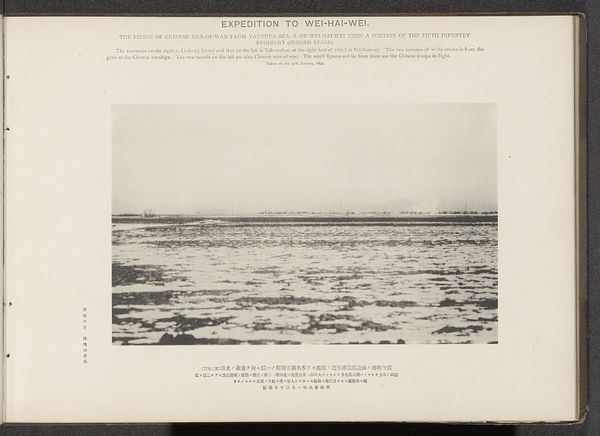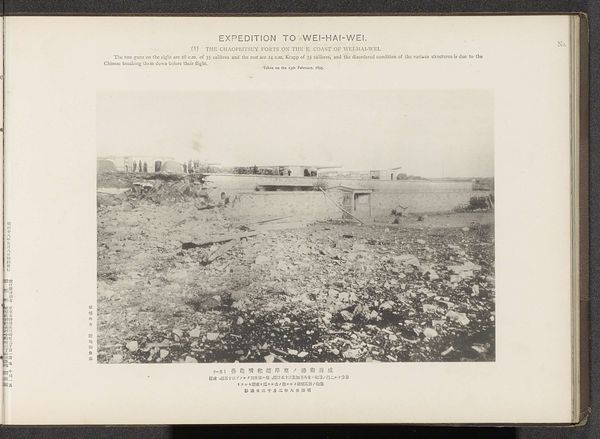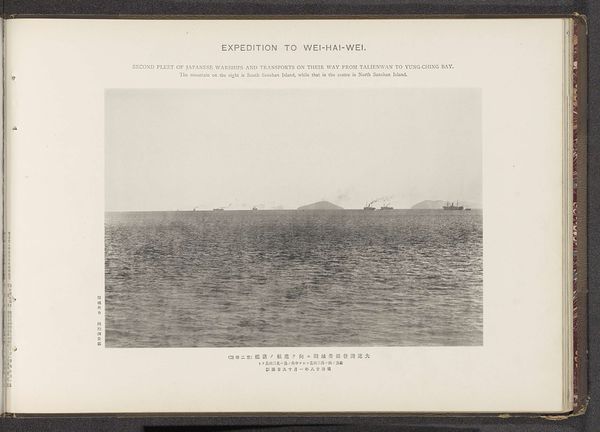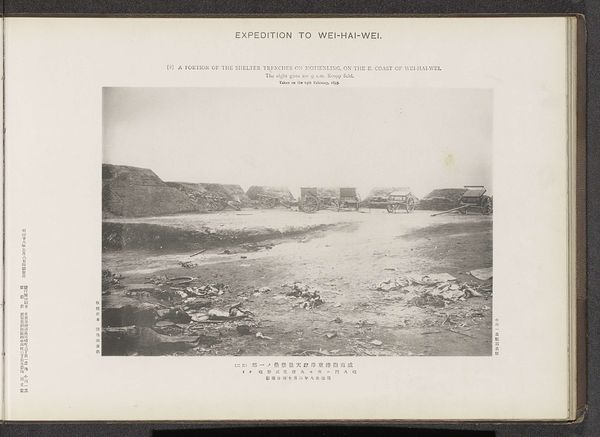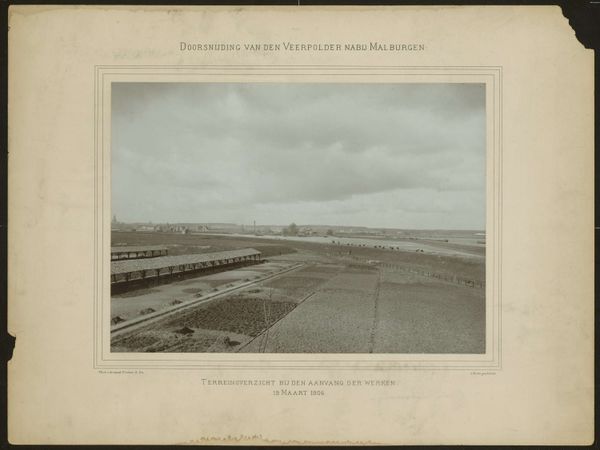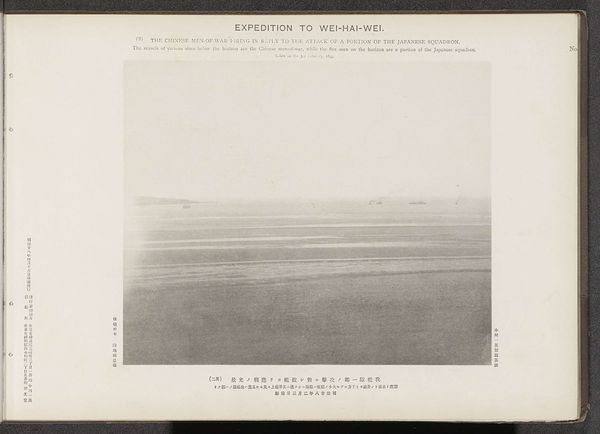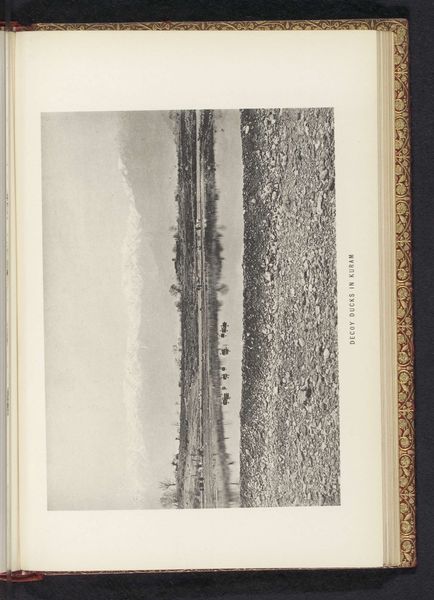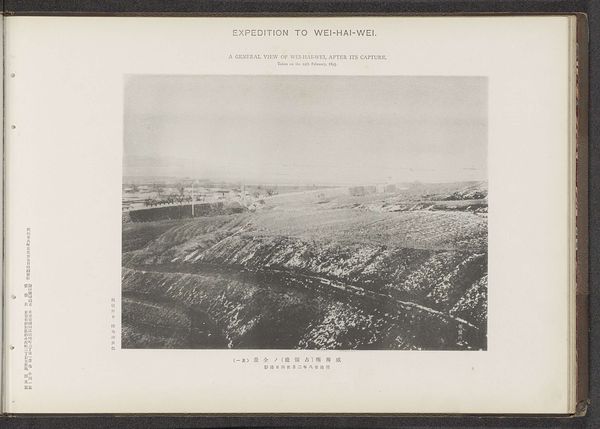
Chinese men-of-war near Yanghea sea firing upon a portion of the fifth infantry regiment, which is in pursuit of the Chinese fugitives along the shore from Yangheatun towards Wei-Hai-Wei Possibly 1895
0:00
0:00
print, photography, photomontage
# print
#
landscape
#
photography
#
photomontage
#
orientalism
#
history-painting
Dimensions: height 178 mm, width 287 mm
Copyright: Rijks Museum: Open Domain
Curator: Here we have "Chinese men-of-war near Yanghea sea firing upon a portion of the fifth infantry regiment, which is in pursuit of the Chinese fugitives along the shore from Yangheatun towards Wei-Hai-Wei," likely from 1895, created by the Ordnance Survey Office. It appears to be a print that utilizes photomontage. Editor: Immediately, the overwhelming grayness conveys a somber atmosphere, like a landscape washed clean of joy. The almost complete lack of color feels like a visual representation of historical erasure, particularly in the context of war. Curator: Indeed, the grayscale palette contributes heavily to the mood. The image’s symbolic weight resides, in part, in this feeling. The bleakness underscores the displacement and the somber historical context. Orientalist visuals often reduced cultures into simplified tropes. The monochrome adds to the perception of otherness and a feeling of detachment. Editor: Absolutely, and viewing this through a critical lens, it is difficult to ignore the imperialist gaze inherent in the scene. The pursuit of "Chinese fugitives" hints at underlying power dynamics and colonial ambition masked as a neutral historical record. We must acknowledge the politics inherent in what is visually depicted here—the hunter becomes the hero. Curator: Very true. The title alone emphasizes conflict and pursuit, the ships firing on individuals along the shore. While it strives for objectivity, this visual document also highlights technological disparity through those “men-of-war,” shaping perceptions and glorifying one side of the conflict. This photograph reflects not just a moment, but also the psychological atmosphere in European society during periods of conquest. Editor: Agreed, the narrative crafted serves to perpetuate colonial mythologies and downplay human suffering and inequalities. Considering whose stories are prioritized—and whose are conspicuously absent—compels viewers to unpack their own assumptions and acknowledge historical violence. I also wonder about the relationship between this representation and contemporary forms of propaganda that distort narratives and legitimize geopolitical aggression. Curator: A powerful observation, certainly. Images carry immense power—cultural memory encoded for easy replication. The symbolism of progress and dominance conveyed in such photography continues to influence attitudes, revealing deep structures within society and personal mindsets. Editor: Reflecting on this now, I’m struck by the necessity of constantly questioning the accepted historical version, interrogating the forces that constructed our understandings, and remembering always that those understandings are never neutral. Curator: Yes, through examining this visual, we hopefully grow attuned to the language that underlies such scenes. It’s fascinating how the convergence of medium and content creates narratives that extend far beyond the original moment.
Comments
No comments
Be the first to comment and join the conversation on the ultimate creative platform.
